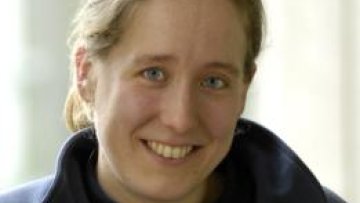14:15
Counting non-simple closed curves on surfaces
Abstract
We show how to get coarse bounds on the number of (non-simple) closed geodesics on a surface, given upper bounds on both length and self-intersection number. Recent work by Mirzakhani and by Rivin has produced asymptotics for the growth of the number of simple closed curves and curves with one self-intersection (respectively) with respect to length. However, no asymptotics, or even bounds, were previously known for other bounds on self-intersection number. Time permitting, we will discuss some applications of this result
Many congratulations to Dr Vicky Neale on being a winner in the Most Acclaimed Lecturer category at the Oxford University Student Union Teaching Awards.
14:15
Running on Shear Thickening Suspensions
Abstract
Shear Thickening fluids such as cornstarch and water show remarkable response under impact, which allows, for example, a person to run on the surface of the suspension. We perform constant velocity impact experiments along with imaging and particle tracking in a shear thickening fluid at velocities lower than 500 mm/s and suspension heights of a few cm. In this regime, where inertial effects are insignificant, we find that a solid-like dynamically jammed region with a propagating front is generated under impact. The suspension is able to support large stresses like a solid only when the front reaches the opposite boundary. These impact-activated fronts are generated only above a critical velocity. We construct a model by taking into account that sufficiently large stresses are generated when this solid like region spans to the opposite boundary and the work necessary to deform this solid like material dissipates the kinetic energy of the impacting object. The model shows quantitative agreement of the measured penetration depth using high speed video of a person running on cornstarch and water suspensions.


